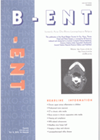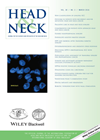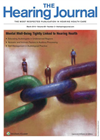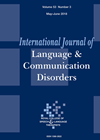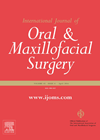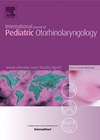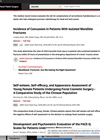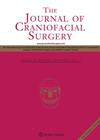
Journal Reviews archive for 2016
Assessing surgical tracheostomy skills
Surgical tracheostomy is an essential operation that trainees must be competent in. There is a lot of research currently looking into assessing trainees’ surgical abilities, particularly into assessments that can be used to demonstrate progress, so this article is very...
Difficult consultations with HPV-positive oropharnyeal cancer patients
The aetiological role of human papillomavirus (HPV) in oropharyngeal squamous cell carcinoma (OPSCC) is well established, and its incidence has massively increased over the last decade, whilst the incidence of HPV-negative OPSCC is declining. Although we know that HPV-positive OPSCC...
Auditory neuropathy spectrum disorder
This is a concise summary of auditory neuropathy and current knowledge of the disorder through review of a recently published article. The terminology of this hearing disorder implies the site of the lesion is neural; however the characteristic electrophysical signature...
Working with clients of communication disorders from culturally and linguistically diverse populations
Speech language therapists (SLTs) deliver evidence based services worldwide for communication disorders to culturally and linguistically diverse (CLD) populations. They have to modify their approaches and tailor them to the needs of their students / patients. This article studies the...
Team based learning in speech language pathology graduate courses
According to the author of this article, the role of a speech language pathologist involves clinical problem solving in both diagnostic and treatment processes. Problem solving involves cooperative collaboration with clients and their parents. Therefore, in this pilot study, the...
Carotid artery involvement with head and neck metastases
This is a retrospective review of 27 patients radiologically diagnosed as having metastases involving the common or internal carotid arteries. All patients underwent a salvage neck dissection with surgical carotid peeling. Thirteen of the 27 achieved loco-regional control, five developed...
Changes in airway dimensions after orthognathic surgery
This is a systematic review of meta-analysis evaluating the effect of different types of orthognathic surgery on the cross sectional area and volume of the upper airway as assessed using CT or MRI. They found 28 articles of which only...
What can the anterior cranial fossa fracture pattern tell us?
This assessment involves 81 patients treated between two regional major trauma centres in the UK. Fifty sustained a predominantly anterior directed force and 31 a lateral impact. They found that anterior impacts reduce the incidence of fracture propagated beyond the...
Paediatric lymphadenopathy – helpful decision making
The authors present a very helpful algorithm to manage cervical lymphadenopathy in children. The goal of managing children with inflamed lymph glands is to identify the rare malignant case and not over-investigate the vast majority of benign reactive swellings –...
Concussion and isolated mandible fractures – are we asking the right questions?
Concussion and isolated mandible fractures – are we asking the right questions? The mandible is one of the most commonly fractured craniofacial bones. A significant force is required to bring this about. Hence the authors hypothesised that concussion after a...
Are elective facelifts a good idea after head and neck cancer radiotherapy?
The aim of this study was to assess the safety of elective cervicofacial rhytidectomy following radiotherapy for head and neck squamous cell carcinomas (HNSCC). A greater proportion of HNSCC patients are infected with certain strains of the human papillomavirus, which...
Maternal angst
This paper confirms the anxiety that a mother experiences when their child undergoes surgery. The paper focuses on adenoidectomy and adenotonsillectomy for moderate to severe upper airway obstruction showing admirably how anxiety reduces following surgery. The authors recruited 66 mothers...

